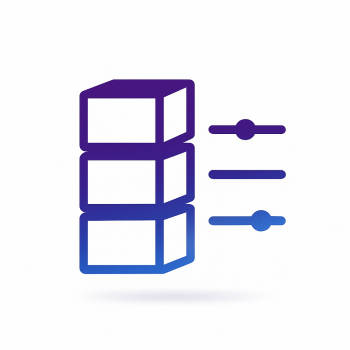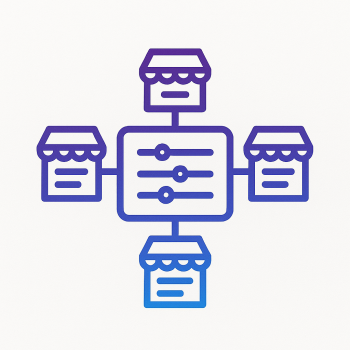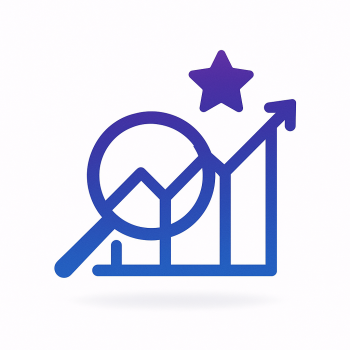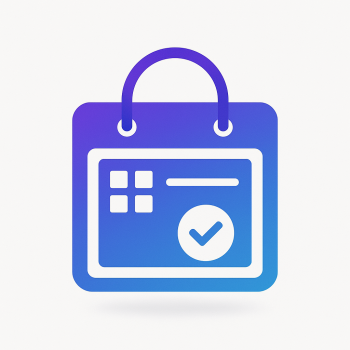How to Use Magento 2's Customer Groups for Targeted Promotions and Content

How to Use Magento 2's Customer Groups for Targeted Promotions and Content
If you’re running a Magento 2 store, customer groups are one of those underused features that can deliver outsized results. Think of them as neatly labeled buckets — you can serve different prices, promotions, and even entirely different content to each bucket. In this post I’ll walk you through advanced admin configuration, practical segmentation strategies, code examples you can paste into a module or data patch, integration tips for marketing automation, concrete B2B vs B2C use cases (loyalty, tiered pricing), and how to measure ROI so you can iterate properly. I’ll keep the tone relaxed — like we’re pairing a coffee and working through it together.
Why customer groups matter
Customer groups let you classify visitors and customers (e.g., Guests, General, Wholesale, VIP). That classification can then be used by:
- Catalog Price Rules and Cart Price Rules (apply discounts by group)
- Tax rules (tax class per group)
- Visibility control for content and blocks
- Targeting in marketing automation and segmentation feeds
- Reporting and ROI measurement
Used well, groups let you run hyper-targeted promotions and personalize content without building dozens of custom storefronts.
High-level strategy: who to put in which group
Start with a simple taxonomy and expand. Example starter groups:
- Guests (non-logged visitors)
- Retail / General consumers
- Wholesale / Trade / B2B buyers
- Loyalty tiers (Silver, Gold, Platinum) — created once you have repeat purchase data
- Test / Internal (for QA and testing rules)
Segmentation ideas for promotions:
- Cart-value based promotions for high-value segments
- Cross-sell bundles for wholesale vs retail (different margin tolerance)
- Tiered free shipping thresholds per loyalty tier
Advanced technical configuration in Magento 2 admin
Create and configure customer groups
Go to Customers > Customer Groups > Add New Customer Group. Key fields:
- Group Name: obvious but use a naming convention (retail, wholesale, loyalty_gold)
- Tax Class: map groups to tax rules (important for B2B where you may have tax-exempt accounts)
Pro tip: Keep an internal “Test” group to preview promotions without affecting real customers.
Use Catalog Price Rules for group-based catalog discounts
Admin path: Marketing > Catalog Price Rules > Add New Rule.
Important fields:
- Rule Name and Description
- Website scope
- Customer Groups: select the group(s) you want
- Conditions: SKU, attribute set, category, etc.
- Actions: percentage/amount discount, apply to matching products
After saving, be sure to click "Save and Apply" or reindex rules so they take effect on the frontend catalog.
Use Cart Price Rules for checkout-level promotions
Admin path: Marketing > Cart Price Rules. Here you can create coupons scoped to specific groups and set usage limits per customer.
Example use case: 10% off for loyalty_gold on orders over $150 usable once per customer. You can test by creating a coupon with a specific code reserved for that group.
Programmatic examples — show me code
Below are practical code snippets you can use in a custom module or data patch. These are real-world patterns I use when automating group creation, assigning groups, and creating rules. I’ve kept them minimal but practical.
1) Add a customer group programmatically (Data Patch)
Create a data patch under Setup/Patch/Data/CreateCustomerGroup.php:
moduleDataSetup = $moduleDataSetup;
$this->groupFactory = $groupFactory;
}
public function apply()
{
$this->moduleDataSetup->getConnection()->startSetup();
$group = $this->groupFactory->create()->load('loyalty_gold', 'customer_group_code');
if (!$group->getId()) {
$group->setCode('loyalty_gold')
->setTaxClassId(3) // adjust tax class id as necessary
->save();
}
$this->moduleDataSetup->getConnection()->endSetup();
}
public static function getDependencies() { return []; }
public function getAliases() { return []; }
}
That will create a group named loyalty_gold. You can adapt the code to run for multiple groups or to update tax class mapping.
2) Assign a customer to a group on registration (Observer example)
Use event customer_register_success to change the group based on criteria (email domain, referral, or signup flow).
customerRepository = $customerRepository;
}
public function execute(Observer $observer)
{
$customer = $observer->getEvent()->getCustomer();
$email = $customer->getEmail();
// Example rule: any corporate email with @company.com goes to wholesale
if (strpos($email, '@company.com') !== false) {
$customer->setGroupId(3); // wholesale group id
$this->customerRepository->save($customer);
}
}
}
Tip: Use data patches to create the mapping between group code and id during module install, so you never hardcode numeric ids.
3) Create a Cart Price Rule programmatically
Quick example using the SalesRule model (use with DI and prefer repository in production):
ruleFactory->create();
$rule->setName('10% for Loyalty Gold')
->setDescription('Auto-created rule for loyalty gold')
->setFromDate('')
->setToDate('')
->setIsActive(1)
->setCouponType(2) // Specific coupon
->setCouponCode('LOYALTY10')
->setUsesPerCustomer(1)
->setCustomerGroupIds([5]) // group id array
->setSimpleAction('by_percent')
->setDiscountAmount(10)
->setStopRulesProcessing(0);
$this->ruleRepository->save($rule);
Make sure to clear caches and reindex as needed. In production, wrap this behind a data patch or a CLI command so you can version control it.
4) Show different frontend content by group
In a .phtml template, check the session group id and render accordingly:
<?php
/** @var \Magento\Customer\Model\Session $customerSession */
$customerSession = $block->getCustomerSession();
$groupId = $customerSession->getCustomerGroupId();
if ($groupId == 3) : ?>
<div class="promo-wholesale">Special wholesale catalog here</div>
<?php elseif ($groupId == 5) : ?>
<div class="promo-loyalty">Exclusive deals for Loyalty members</div>
<?php else : ?>
<div class="promo-retail">Shop new arrivals</div>
<?php endif; ?>
Better approach: use a block class to fetch group id and inject into the template to keep presentation thin.
5) Serve CMS block per group using layout XML
Create a block and programmatically set the CMS block identifier based on group id in Block class. Example Block method:
public function getCmsIdentifierByGroup()
{
$groupId = $this->customerSession->getCustomerGroupId();
switch ($groupId) {
case 3:
return 'cms_wholesale_banner';
case 5:
return 'cms_loyalty_banner';
default:
return 'cms_default_banner';
}
}
Then use $block->getCmsIdentifierByGroup() in phtml to render the correct block with createBlock('Magento\Cms\Block\Block')->setBlockId($identifier).
Integration with marketing automation and advanced promo modules
Customer groups are a great join-point — you can export customers by group to your marketing automation platform and trigger tailored campaigns.
Example: export customers via REST API filtered by group
Magento REST endpoint for customers with searchCriteria:
curl -X GET "https://yourstore.com/rest/V1/customers?searchCriteria[filter_groups][0][filters][0][field]=group_id&searchCriteria[filter_groups][0][filters][0][value]=5&searchCriteria[filter_groups][0][filters][0][condition_type]=eq" -H "Authorization: Bearer <admin_token>"
That call returns customers in group id 5. You can then feed this into your email platform or CRM, mapping fields and adding tags like loyalty_gold.
Automate rule activation via cron or external scheduler
Need a short weekend sale for VIP group only? Create the rule programmatically and toggle is_active using a cron job. Example partial cron task code:
public function execute()
{
$rule = $this->ruleRepository->getById($ruleId);
$rule->setIsActive(1);
$this->ruleRepository->save($rule);
}
Using cron or CI pipeline to enable/disable promotions reduces manual errors.
Connect to advanced promotion modules
Magento’s ecosystem has modules for loyalty programs, dynamic pricing, and promotions orchestration. The integration pattern is usually:
- Export customer list (by group) to the promo engine or import customer group attributes into the engine.
- Use webhooks or API to push events (order placed, points earned) back to Magento to change group (e.g., move a customer to Silver/Gold).
- Keep a small piece of logic in Magento to guard business-critical decisions (final price calculation, tax handling).
Pro tip: prefer pushing only identifiers and minimal attributes to the external system, and use that system to run heavy segmentation/automation. Use Magento to enforce final prices and order validation.
Concrete use cases: B2B vs B2C, loyalty programs, and tiered pricing
B2B
B2B stores often need wholesale pricing, net terms, or tax-exempt handling. Customer groups map neatly to B2B account types:
- Group: Trade — Catalog Price Rule for wholesale catalog pricing
- Group: Net30 — different checkout flow or payment options based on group
- Group: TaxExempt — map to a tax class with 0% and have admin verify business documents
Example: create a Catalog Price Rule giving 20% off to wholesale group for products in category "bulk-packages". Combine with a Cart Price Rule that offers free shipping for orders above a certain quantity.
B2C
For consumer stores, groups let you run loyalty tiers and special incentives:
- New customers get a welcome coupon exclusive to group "new_customer"
- Repeat customers move to loyalty_gold and see personalized banners and higher discounts
Loyalty program (automated)
Workflow example to earn tiers:
- Customer places orders tracked by events. Orders are sent to an external loyalty engine.
- Engine evaluates points and triggers an API call to Magento to set the group id (e.g., move to loyalty_gold).
- Magento then shows loyalty blocks and enables loyalty-specific Cart/Catalog Price Rules.
Implement the group change with a secure API endpoint in Magento that validates the request. Example minimal controller skeleton:
class Api\Controller\V1\SetGroup extends \Magento\Framework\App\Action\Action
{
public function execute()
{
$customerId = (int)$this->getRequest()->getParam('customer_id');
$groupId = (int)$this->getRequest()->getParam('group_id');
// Validate API key, payload signature, etc.
$customer = $this->customerRepository->getById($customerId);
$customer->setGroupId($groupId);
$this->customerRepository->save($customer);
$this->getResponse()->representJson(json_encode(['success' => true]));
}
}
Tiered pricing
You can implement tiered pricing using Catalog Price Rules or the Advanced Pricing features (group price attribute on product level). For large catalogs, prefer Catalog Price Rules because they’re easier to maintain at scale.
Measuring ROI and analytics for segmented campaigns
Measurement is the most important step. If you can’t measure the incremental lift from customer-group-targeted promotions, you’re flying blind.
Quick analytics checklist
- Track coupon redemptions per customer_group_id
- Report on revenue, average order value (AOV), and conversion rate by group
- Attribute promotional cost (discount) to orders and compute net revenue
- Use UTM parameters on group-specific landing pages to measure campaign source in GA
Sample SQL: revenue by customer group (simple)
SELECT
cg.customer_group_code,
SUM(o.base_grand_total) AS total_revenue,
COUNT(o.entity_id) AS orders_count,
AVG(o.base_grand_total) AS avg_order_value
FROM
sales_order AS o
LEFT JOIN
customer_group AS cg ON o.customer_group_id = cg.customer_group_id
WHERE
o.created_at >= '2025-01-01'
GROUP BY
o.customer_group_id;
This gives you a raw look at revenue and AOV per group. For campaign-level attribution, join sales_order with salesrule_coupon and salesrule_redemption tables or use order-level coupon codes.
Compute ROI for a group-specific campaign
Simple ROI formula for a promotion:
ROI = (IncrementalRevenue - PromotionCost) / PromotionCostHow to estimate:
- IncrementalRevenue: revenue from coupon redemptions in the target group minus baseline revenue (e.g., same period previous week without promos)
- PromotionCost: sum of discounts given (sum of discount_amount on orders) + marketing spend (ad cost, emails)
Example calculation (very simplified):
IncrementalRevenue = $10,000
PromotionCost (discounts) = $1,500
Marketing spend = $500
PromotionCostTotal = $2,000
ROI = (10,000 - 2,000) / 2,000 = 4 (400%)Important: use A/B testing where possible. Compare a segment exposed to the promotion with a control group that does not get it (or gets a different promo). That helps separate seasonality and other effects.
Tracking user journeys by group
Tag pages and events with the customer group (only for logged users). For example, push customer_group to a dataLayer event so your analytics platform can segment sessions. Example JavaScript snippet to push group id:
window.dataLayer = window.dataLayer || [];
window.dataLayer.push({
'event': 'customerInfo',
'customerGroupId': '5',
'customerGroupName': 'loyalty_gold'
});
With that, generate funnels and conversion reports per group in Google Analytics or your BI tool.
Operational tips and pitfalls
- Don’t create too many groups at first — keep it manageable. Each group increases admin complexity and testing surface.
- Always have a test group and test accounts for each group so you can preview prices and content without deploying site-wide changes.
- Be careful with indexers: after programmatic changes to pricing rules or products, reindex and flush caches.
- Audit coupon codes and rule overlaps: rules can stack or override depending on “stop rules processing”.
- Document the life cycle of a group — who can change it and under what circumstances (e.g., automated move to loyalty only after confirmed payment).
Examples of small automation flows
Auto-move customer to loyalty_gold after threshold
Pseudo-flow:
- Daily cron runs retrieves total lifetime spend per customer.
- If spend > threshold (e.g., $1,000), call Magento API to set group_id to loyalty_gold.
- Send an email via your marketing platform to congratulate them and enable the loyalty-specific coupon in Magento.
Cron sample: set group based on lifetime order value (pseudo)
// Pseudo code outline:
$customers = $this->customerCollectionFactory->create();
foreach ($customers as $customer) {
$lifetime = $this->getLifetimeValueForCustomer($customer->getId());
if ($lifetime >= 1000 && $customer->getGroupId() != $goldGroupId) {
$customer->setGroupId($goldGroupId);
$this->customerRepository->save($customer);
}
}
Make sure to throttle and run during low traffic windows. Keep logs and notifications for failures.
Testing and QA
Test every combo: group + price rule + catalog + checkout. Here’s a short checklist:
- Create accounts in each target group and password-manage them for QA
- Preview catalog prices as a logged-in user per group
- Run through checkout with coupons and validate discount computations and tax behavior
- Ensure emails (order, invoice) reflect correct pricing and tags
- Validate analytics and ensure group id is pushed to your dataLayer
Putting it all together: a sample campaign
Let’s run a hypothetical campaign for loyalty_gold:
- Goal: increase repeat purchases among loyalty_gold by 20% this quarter.
- Audience: customers with group loyalty_gold (1000 customers).
- Promotion: 10% off catalog + free shipping over $75, coupon LOYALTY10 active for 30 days.
- Execution steps:
- Programmatically create and activate Cart Price Rule with coupon LOYALTY10 for loyalty_gold and set start/end date.
- Export loyalty_gold customers via REST and import into marketing automation to schedule the launch email.
- Push a frontend banner only visible to loyalty_gold (CMS block rendered by group).
- Track coupon redemptions and orders, and compute incremental revenue vs. baseline.
- Measurement:
- Orders with coupon LOYALTY10 by group
- Revenue and AOV uplift
- Cost of discounts + email/ad spend
Summary and best practices checklist
Short checklist before you launch:
- Define a simple group taxonomy; don’t overcomplicate
- Use data patches or versioned scripts to create groups and rules — keep everything in VCS
- Prefer exporting minimal customer info and doing heavy segmentation in your marketing tool
- Test, test, test. Always have a test account per group
- Measure: coupon redemptions, orders, revenue by group. Compute ROI and iterate
- Keep business logic simple in Magento (price calc, tax). Offload orchestration to specialized systems
Why Magefine customers should care
If you host with Magefine or use Magefine extensions (or plan to), think about integrating these group flows into your deployment pipeline. Versioned data patches, scheduled crons, and monitorable APIs make automation safe. Use your hosting provider’s staging and snapshot capabilities to preview promotions and price changes before you flip them live.
Final notes
Customer groups in Magento 2 are low-friction, high-impact. With a handful of groups, some disciplined automation, and a clear measurement plan, you can run promotions that feel personal and convert better. If you’d like, I can provide a downloadable example module scaffold that includes a data patch to create groups, a cron to sync lifetime spend, and sample Cart Price Rule creation — or walk through a tailored plan for your catalog and margins.
Happy building — and ping me if you want the sample module scaffold or help wiring analytics for ROI tracking. If you’re running on magefine.com hosting, use a staging snapshot to test these flows before you go live.





